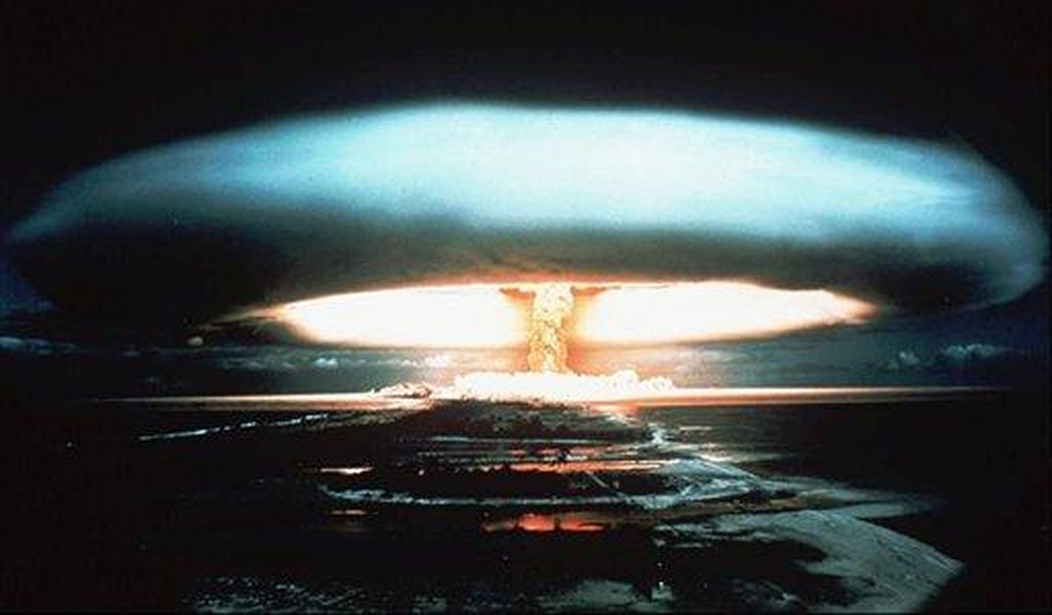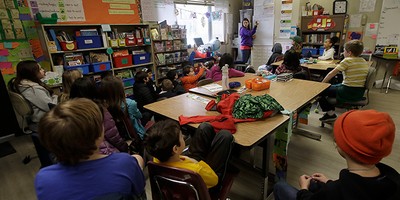Forty years ago this week, one American made for TV film made a dramatic impact on the Cold War. Though the political origins of the film were leftist in nature, the powerful nature of “The Day After” continues to be felt.
“The Day After” showed graphic scenes of what a nuclear conflict between the United States and the Soviet Union would be in Kansas, in large cities and on isolated American farms. Images of people at weddings and children at school being eviscerated instantly were terrifying, as were those who knew what the fires approaching them meant. Children were stomped in on panic and police vainly tried to keep order during the panic buildup even before the blast.
Church services in a destroyed sanctuary, EMP pulses, leaving animals to die before their owners, hospitals without power, lack of medical supplies, food riots and military firing squads were all shown in “The Day After”
For many the most horrific scene was not the goriest but of a mother still preparing for her daughter’s wedding despite knowing the missiles on both sides had already been shot off. The husband bear hugged his wife as she continued making her bed. He dragged her downstairs towards the family cellar while she screamed “No!” in gut wrenching pain. “The Day After” is often described as scarier than most horror movies, despite the postscript of the film saying that scenes depicted were “in all likelihood, less severe than the destruction that would actually occur in the event of a full nuclear strike on the United States.”
Ironically, for some, “The Day After” was not the most terrifying nuclear war film ever made. A year later “Threads,” which showed the immediate and years aftermath of a nuclear attack in and around the city of Sheffield, England was made and is often considered even worse and perhaps even more realistic, were that possible. In a nod to “The Day After”, the most terrifying scene in Threads may have been of a woman who literally wet her pants when seeing a nuclear mushroom cloud, miles away, go up in the air.
Recommended
Reactions to these films were strong. “The Day After” came during the time of the U.S. deployment of intermediate nuclear missiles in Western Europe. Thousands had been protesting against such a move and the left countered with its infamous moral equivalence argument; an argument unfortunately that is still seen today regarding the Israeli-Palestinian conflict and other facets of American foreign policy. Despite the leftist underpinnings of “The Day After,” it is hard to imagine such a film being made in the Soviet Union.
Though the natural fear of nuclear war was prevalent even before the film, President Reagan and Western Europe rightly pressed on with the deployment; a deployment which sent a message to the Soviet Union that further aggression against the Free World would not be tolerated.
The peace movement wholly embraced “The Day After” while world leaders of all stripes did want to see it. Reagan had a private screening at The White House. The film stirred him to double down on peace through strength and not back down to the Communist bloc while retaining hope for future disarmament efforts from a position of strength. Reagan was supported during this time from Conservatives as varied as Ben Stein, William F. Buckley, Jerry Falwell and others.
While the ideological politics of “The Day After”were leftist in scope, in dedication to total nuclear disarmament, the even greater overall message as said in the postscript of people and their leaders needing “to find the means to avert the fateful day” is one that thankfully resonates with Americans of all stripes. Hopefully it will with the rest of the world.
As one of the most realistic nuclear war films, “The Day After” is a film everyone should see. There are no winners in nuclear war but we must also remember, as did Reagan, that peace in a very fallen world comes through strength. Through such strength, balanced by a Godly and righteous people, the fateful day will be averted at least on our end.
*Views expressed in this article are those of the author and not any government agency

























Join the conversation as a VIP Member